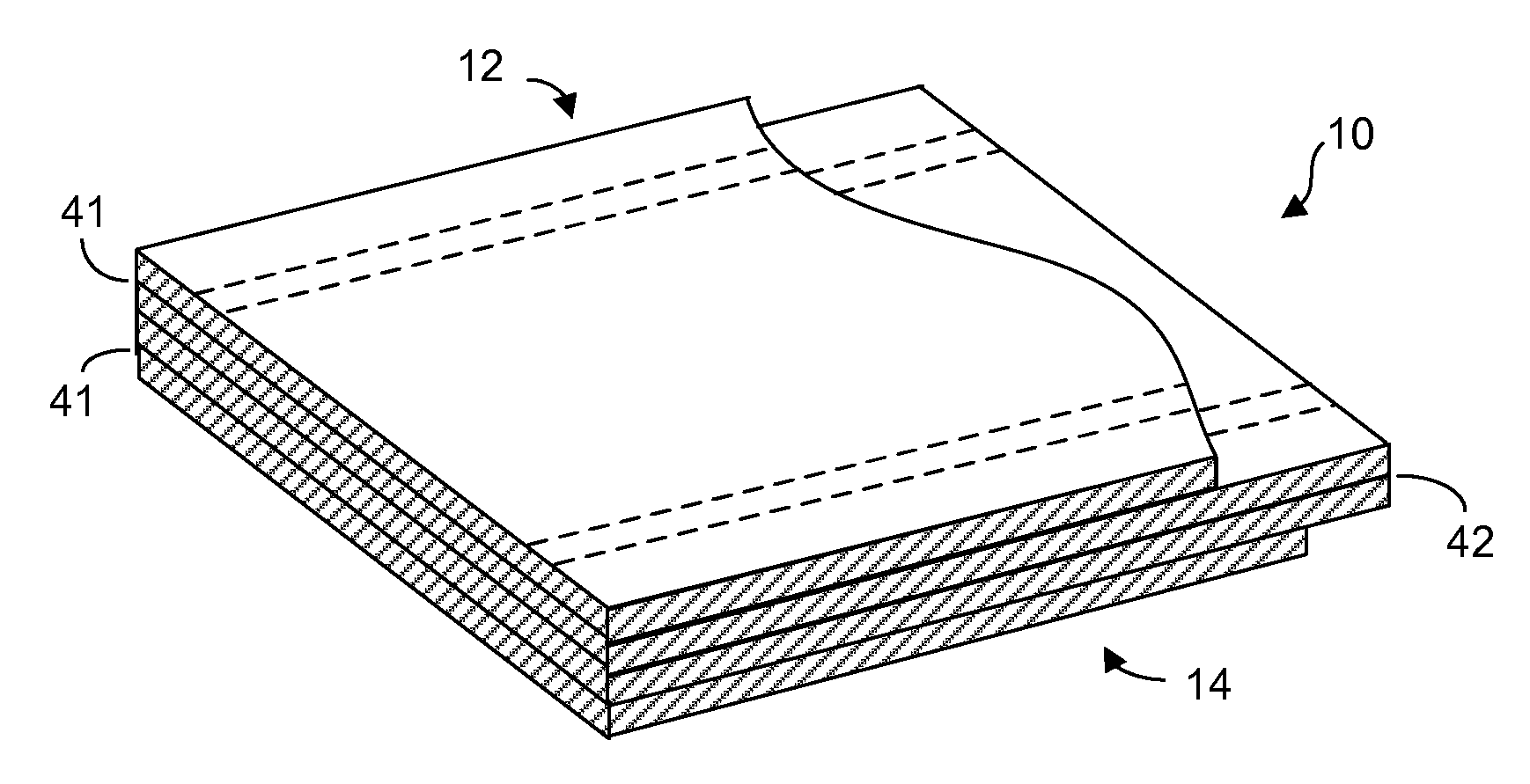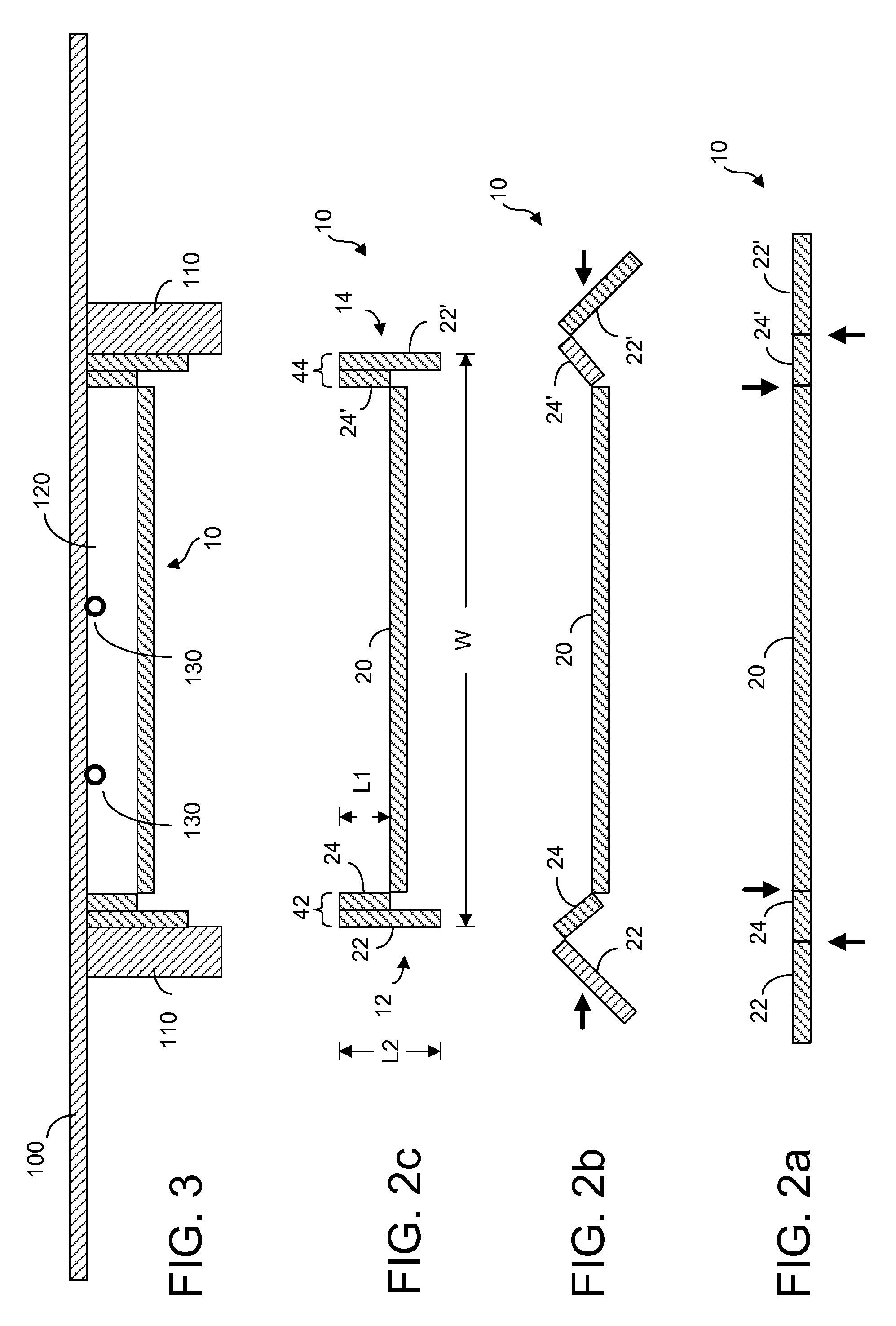Radiant thermal barrier
- Summary
- Abstract
- Description
- Claims
- Application Information
AI Technical Summary
Benefits of technology
Problems solved by technology
Method used
Image
Examples
first embodiment
[0027]Turning first to FIG. 1, a radiant heat barrier 10 is shown according to the present invention comprising an extended length of sectional panels 20 such as laminates of a card board or of a synthetic resin foam board such as polystyrene or polyurethane or of any lightweight construction material usually formed into a thin, rectangular panel or board. Laminar skins may be applied on each planar surface thereof to form the laminate board. The laminar skins may be inherent in the material of the panels or board itself. The laminar skins provide rigidity and integrity for the unfolded planar sections of building panels in the unfolded state of FIG. 1 in its extended length. Such skins may be fabricated of synthetic resin film and one or both of the skins may be metalized.
[0028]The radiant thermal barrier 10 shown in its extended length in FIG. 1 is shown with a series of transverse cuts 41, 42 spaced along the extended length. In the production process, alternating cuts 41 may be ...
second embodiment
[0039]FIG. 5a shows a sectional view of the extended panel of FIG. 1 before formation of the channel of FIG. 5c using a material with folding lines pressed according to the present invention. Instead of the cuts of FIG. 2a, FIG. 5a shows v-shaped indentations pressed into the material of the board. The board includes a main channel inner part comprising a central part of panel sections 20 between inner folding lines 31, 31′, an inner channel wall section 24, 24′ along an inner edge part of the board and an outer channel wall section 22, 22′ along an outer edge part of the board. As mentioned, the two pairs of longitudinal folding lines 31, 31′ and 33, 33′ are shown in a non-limiting way on opposite surfaces of the board as indentations instead of cuts. The outer pair of folding lines 33, 33′ may be impressed as shown on only the bottom surface of each adjacent planar section 20. Likewise, the inner pair of folding lines 31, 31′ may reside only on the other (bottom) surface of the ad...
PUM
 Login to View More
Login to View More Abstract
Description
Claims
Application Information
 Login to View More
Login to View More - R&D
- Intellectual Property
- Life Sciences
- Materials
- Tech Scout
- Unparalleled Data Quality
- Higher Quality Content
- 60% Fewer Hallucinations
Browse by: Latest US Patents, China's latest patents, Technical Efficacy Thesaurus, Application Domain, Technology Topic, Popular Technical Reports.
© 2025 PatSnap. All rights reserved.Legal|Privacy policy|Modern Slavery Act Transparency Statement|Sitemap|About US| Contact US: help@patsnap.com



